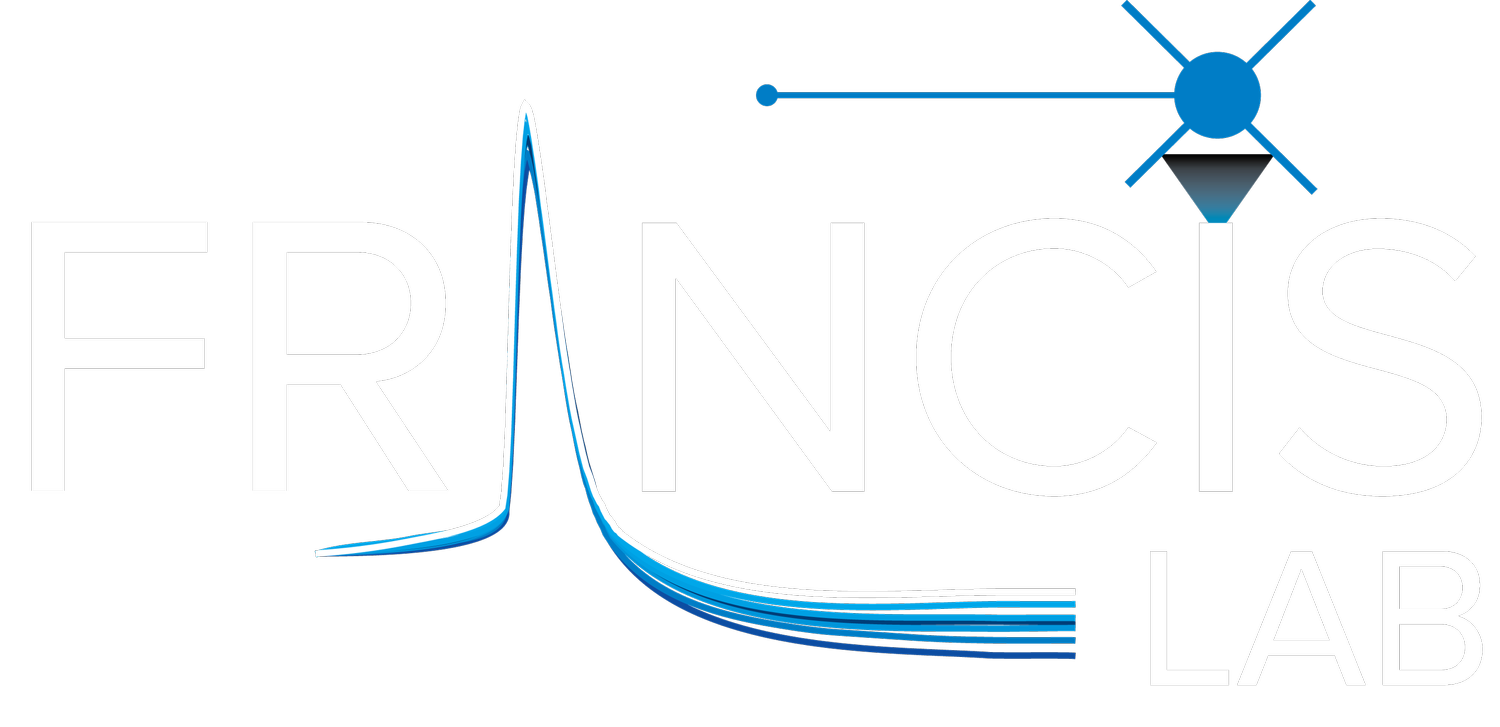Overview:
The goal of the Francis lab is to develop new therapeutics for psychiatric and neurodegenerative disorders. We primarily study the connections between brain cells and how those altered connections cause poor outcomes of these disorders. More specifically, our lab aims to determine synaptic underpinnings of learning, anxiety, aversive salience, and behavioral depression while developing novel, non-invasive therapeutics. We use a multifaceted approach to assess synaptic alerations in these disorders and assess neural and synaptic activity in brain slices and in the intact brain of awake behaving rodents.
Insular cortex expression of channelrhodopsin in the mouse brain.
How do animals process salient stimuli?
Animals encounter enormous amounts of stimuli throughout the day and must direct their attention to the most relevant or salient information that will help to complete tasks or, on an evolutionary level, ensure survival. In particular, animals tend to focus on and remember those stimuli that are unpleasant, stressful, or aversive. Reward-related brain regions like the Nucleus Accumbens also tend to respond to these stimuli and are critical in guiding motivational responses. This project seeks to understand how this brain region is activated by salient aversive stimuli and how changes in connections within this region alter response to new aversive stimuli. Outcomes of this project will have relevance for disorders related to anxiety, post-traumatic stress disorder, and depression. Funded by NIMH (R00).
We are now conducting a second project to determine how neutral sensory stimuli can be used to facilitate plasticity in the Nucleus Accumbens.
Expression of green fluorescent protein in the Nucleus Accumbens.
What neural processes are required for learning about stressful social stimuli?
One of the primary stressors we face as humans is social stress. This is not unique to humans but rather to all animals that rely on social interactions for survival. Negative social interactions or stressful social events can lead to symptoms including anhedonia, or the blunted ability to experience pleasure, and is a key symptom of many neuropsychiatric disorders such as depression. Repeated exposure to these negative, stressful interactions is a strong risk factor for anhedonia and one of the primary experimental means to study depression. We are exploring several neuromodulatory (deep brain stimulation) and pharmacological mechanisms of the development or re-development of these symptoms in response to social stressors.
Medium spiny projection neuron in the Nucleus Accumbens. Courtesy of Cortez Gray.
How does acute and repeated stress cause synaptic plasticity?
Acute stress is adaptive allowing for survival from threatening environmental stimuli. Repeated stress is maladaptive and a risk factor for the development of psychiatric disorders including anxiety and depression. The lab is investigating how acute and repeated stress causes synaptic and morphological changes in specific neuron subpopulations across the striatum. We hope to assess synaptic signatures of stress and generate novel targets to treat maladaptive outcomes to repeated stress while maintaining adaptive stress-related properties of these neuronal systems.
How do circadian rhythms alter striatal physiology and function? (collaboration with Porcu Lab)
Dopamine is known to have strong roles in mood and reward. Our early data indicates physiological changes driven by dopamine system and local circadian regulation of the Nucleus Accumbens can alter stress responsivity.
Methodology and Techniques
1. Whole-cell patch clamp physiology and pharmacology for assessment of intrinsic and synaptic activity in neurons and mechanistic alterations due to
2. Fiber photometry for sensor and (field) calcium imaging in vivo during behavior.
3. Single cell miniscope calcium imaging for in vivo assessment of neural activity during behavior.
4. Optogenetics and chemogenetic methods for in vivo cell activity manipulation
5. Brain stimulation methods: electrical, optical, non-invasive
6. CRISPR-Cas9 for selective gene knockout
7. Stress, anhedonia, anxiety, and reward mouse models




